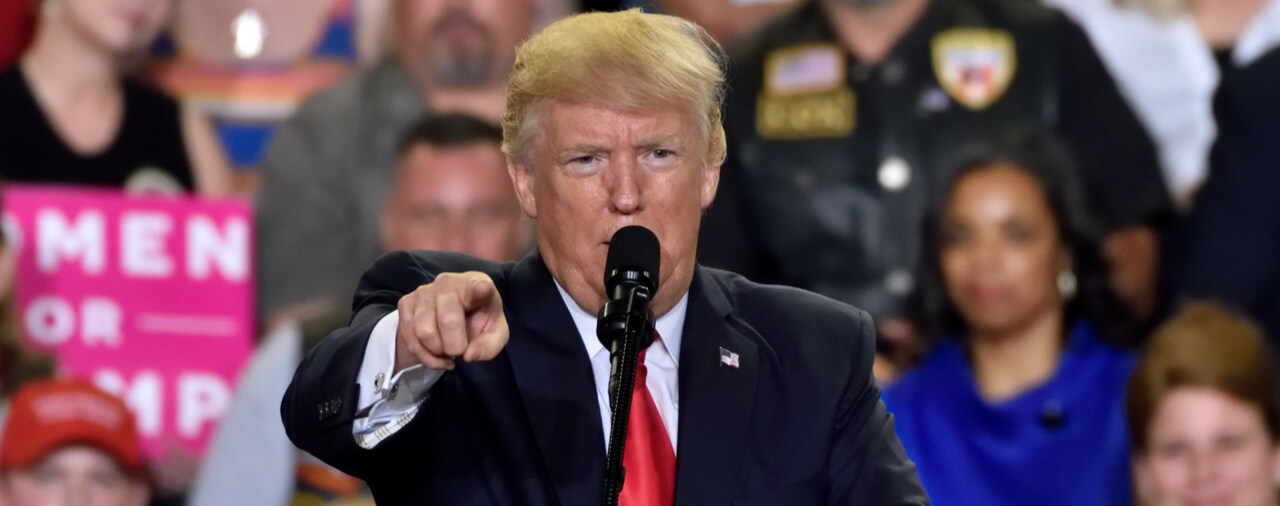- Introduction
- Immigration Components of “Buy American and Hire American” Executive Order
- Statement of Purpose and Key Definitions
- Ensuring Integrity of Immigration System in Accord With “Hire American” Provisions
- Conclusion
Introduction
On April 18, 2017, President Donald Trump issued Executive Order 13788, titled “Buy American and Hire American.” The Executive Order 13788 was published in the Federal Register (FR) on April 21, 2017 [see 82 FR 18837]. The purpose of the “Buy American and Hire American” Executive Order is to direct relevant Federal departments to craft policies that will encourage the purchase of American-made products and the hiring of U.S. workers. In this article, I will examine the provisions of Executive Order 13788 that implicate the immigration laws, most notably the H1B program [see category].
Immigration Components of “Buy American and Hire American” Executive Order
For the purpose of this article, we will examine the “Hire American” half of the Executive Order. The “Buy American” half of the order is important in two respects. Firstly, it implicates changes in many U.S. policies, perhaps most significantly those related to procurement by several U.S. agencies and departments. Secondly, the “Buy American” half of the order is ostensibly connected to the “Hire American” half of the order, in that its purpose is in part to make it easier for U.S. companies to hire workers of the United States (see below) at solid wages. However, we will focus only on the “Hire American” half of the Order which directly, rather than tangentially, implicates immigration policies.
Statement of Purpose and Key Definitions
In section 2(b) of the Executive Order, President Trump sets forth the goals of the “Hire American” policy:
[T]o create higher wages and employment rates for workers in the United States…
The Executive Order defined the term “workers in the United States” in section 1(e) of the Executive Order. The definition relies upon section 212(n)(4)(E) of the Immigration and Nationality Act. Section 212(n)(4)(E) defines the term “United States worker” as an employee who is either:
1. A citizen or national of the United States; or
2. An alien who is lawfully admitted for permanent residence, is admitted as a refugee under section 207, is granted asylum under section 208, or is an immigrant otherwise authorized by the [Secretary of Homeland Security] to be employed.
In short, “workers in the United States” encompass U.S. citizens, non-citizen nationals [see article], lawful permanent residents (LPRs), and certain classes of aliens authorized to work in the United States, including asylees and refugees. Thus, the purpose of President Trump’s “Hire American” initiative is to increase wages and employment rates for these individuals.
Having set forth the objective, President Trump explained in broad strokes the Trump Administration’s general policy for accomplishing it:
[I]t shall be the policy of the executive branch to rigorously enforce and administer the laws governing entry into the United States of workers from abroad, including section 212(a)(5) of the Immigration and Nationality Act.
Section 212(a)(5) of the Immigration and Nationality Act (INA) renders inadmissible the entry of any alien for the purpose of that alien performing skilled or unskilled labor unless such an alien is authorized. Section 212(a)(5)(A)(i) sets forth the labor certification requirements, wherein the Secretary of Labor must certify that there are not sufficient workers of the United States or aliens described in section 212(a)(5)(A)(ii) to take the position, and the employment of the alien will not adversely affect the wages and working conditions of workers of the United States similarly employed [see category for PERM]. Section 212(a)(5)(A)(ii) sets forth exceptions for certain aliens who are exempt from the labor certification requirements. The rest of section 212(a)(5) deals with specific cases, such as (A)(iii) (professional athletes), (iv) (long-delayed adjustment applicants), (B) (unqualified physicians), and (C) (uncertified foreign health-care workers).
In short, President Trump states that, in order to improve the employment rates and wages for workers of the United States, his Administration will seek to vigorously enforce the labor certification requirements of section 212(a)(5) of the INA. As we will see, this places an emphasis on the policies of the Department of Labor (DOL) and on the administration of the H1B program (see section 1(c) of the Executive Order, which specifically references H1B petition beneficiaries).
Ensuring Integrity of Immigration System in Accord With “Hire American” Provisions
Section 5(a) of Executive Order 13788 directed the Secretary of State, the Attorney General, the Secretary of Labor, and the Secretary of Homeland Security to, as soon as practicable and in a manner consistent with the applicable laws, propose new rules and issue new guidance to implement the broad policies outlined in section 2(b) of the Executive Order. If necessary and/or appropriate, President Trump directed the agency heads to implement new rules and guidance to supersede existing rules and guidance in order to protect the interests of workers of the United States in the administration of the immigration laws. President Trump included the “prevention of fraud or abuse” in this directive.
Section 5(b) of the Executive Order directed the four secretaries to suggest reforms to help ensure that H1B visas are awarded only to the most-skilled or highest-paid H1B petition beneficiaries. The purpose of this directive is both to ensure that the H1B visa program is fulfilling its purpose and to prevent the H1B visa from hurting the employment prospects and wages of workers of the United States.
Section 6 of the Executive Order clarifies its limitations. Most significantly, section 6(b) makes clear that the Order must be implemented in a manner that is consistent with applicable laws and subject to available funding. This means that the Executive Order and any associated policy changes will be implemented within the framework of existing laws. Section 6(a) makes clear generally that the Executive Order will not limit the existing authority of any department or agency.
Conclusion
The “Buy American and Hire American” order provides policy directions to the heads of several Executive Branch agencies. However, it does not change existing laws. Regarding immigration law and policy, the focus of the order is to formulate and implement policies that will ensure that the employment and labor certification components of the immigration laws are strictly enforced. The purpose of this is to protect the employment, work conditions, and wages of workers of the United States. Interestingly, President Trump singled out the H1B program for special attention.
The full effect of the Executive Order cannot be known until we see specific new policies from the Departments of State, Justice, Labor, and Homeland Security. To this effect, the Department of Homeland Security (DHS) [see article] and Department of Justice (DOJ) [see article] had already begun emphasizing the reduction of fraud and abuse in work visa programs prior to the issuance of the Executive Order. Furthermore, President Trump’s interior enforcement Executive Order promises significant changes in policies relating to the enforcement of the immigration laws [see article]. Although the Department of Labor (DOL) has not yet fully implemented new policies, it is worth noting that Secretary Alexander Acosta has made note of labor certification issues on a consistent basis since his confirmation [see blog].
We will update the site with news about important immigration policy developments as they become available.





